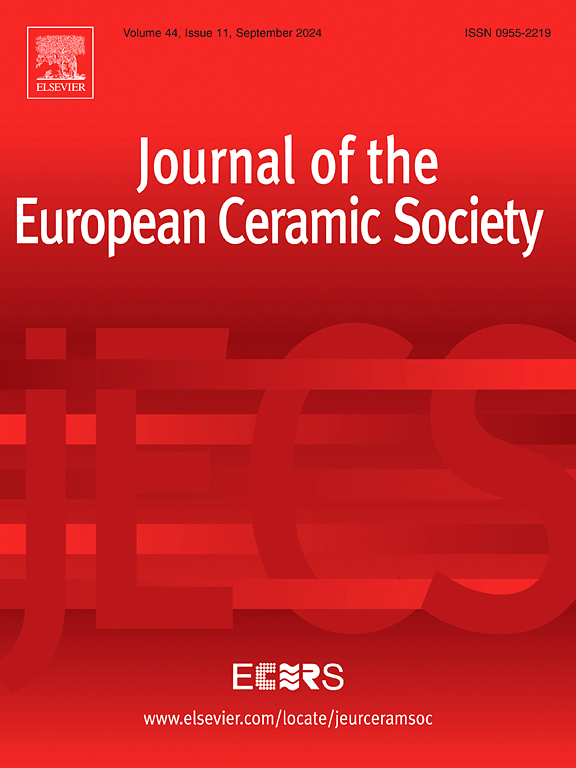单片电解质支撑的固体氧化物燃料电池由3d打印模具上的凝胶铸造制造
IF 5.8
2区 材料科学
Q1 MATERIALS SCIENCE, CERAMICS
Journal of The European Ceramic Society
Pub Date : 2025-03-19
DOI:10.1016/j.jeurceramsoc.2025.117379
引用次数: 0
摘要
提出了一种基于凝胶浇铸技术在3d打印模具上制造单片电解质支撑固体氧化物燃料电池的新方法,以提高其电化学和力学性能。采用凝胶法制备了8 摩尔%钇稳定氧化锆(YSZ)电解质的平面和蜂窝结构。制备了合适的YSZ和琼脂糖胶凝剂水性油墨配方,并采用3d打印技术制备了聚乳酸长丝模具。采用球对三球弯曲强度和纳米压痕试验,比较了凝胶浇铸陶瓷和冷等静压陶瓷的力学性能。此外,通过有限元模拟研究了电解液几何形状对机械应力分布的影响。最后,采用Ni-YSZ阳极和镧-锶-锰- ysz阴极制备了完整的燃料电池并进行了电化学表征。蜂窝电池的电化学性能(900℃时227 mW·cm−2)显著高于平面电池(900℃时189 mW·cm−2)。凝胶铸造电解质的电化学和机械性能与最先进的电解质接近,验证了这种新方法。本文章由计算机程序翻译,如有差异,请以英文原文为准。
Monolithic electrolyte-supported solid oxide fuel cells fabricated by gel-casting on 3D-printed moulds
A new approach for fabricating monolithic electrolyte-supported Solid Oxide Fuel Cells based on gel-casting technique on 3D-printed moulds is proposed to enhance their electrochemical and mechanical performances. Conventional planar and honeycomb configurations of 8 mol% yttria-stabilized-zirconia (YSZ) electrolytes were gel-casted. Proper aqueous ink formulations of YSZ and agarose gelling agent were prepared, and moulds made of polylactic acid filament were fabricated by 3D-printing. The mechanical behaviour of gel-casted ceramics was compared with cold-isostatic-pressed ones, using ball-on-3-balls bending strength and nanoindentation tests. Complementarily, the effect of electrolyte geometry on the mechanical stress distribution was investigated by finite element simulation. Finally, complete fuel cells were fabricated and electrochemically characterized, using Ni-YSZ anode and lanthanum-strontium-manganite-YSZ cathode. Electrochemical performance of the honeycomb cell (227 mW·cm−2 at 900°C) was significantly higher than the planar one (189 mW·cm−2 at 900°C). The electrochemical and mechanical properties of gel-casted electrolytes, close to state-of-the-art ones, validate this new approach.
求助全文
通过发布文献求助,成功后即可免费获取论文全文。
去求助
来源期刊

Journal of The European Ceramic Society
工程技术-材料科学:硅酸盐
CiteScore
10.70
自引率
12.30%
发文量
863
审稿时长
35 days
期刊介绍:
The Journal of the European Ceramic Society publishes the results of original research and reviews relating to ceramic materials. Papers of either an experimental or theoretical character will be welcomed on a fully international basis. The emphasis is on novel generic science concerning the relationships between processing, microstructure and properties of polycrystalline ceramics consolidated at high temperature. Papers may relate to any of the conventional categories of ceramic: structural, functional, traditional or composite. The central objective is to sustain a high standard of research quality by means of appropriate reviewing procedures.
 求助内容:
求助内容: 应助结果提醒方式:
应助结果提醒方式:


